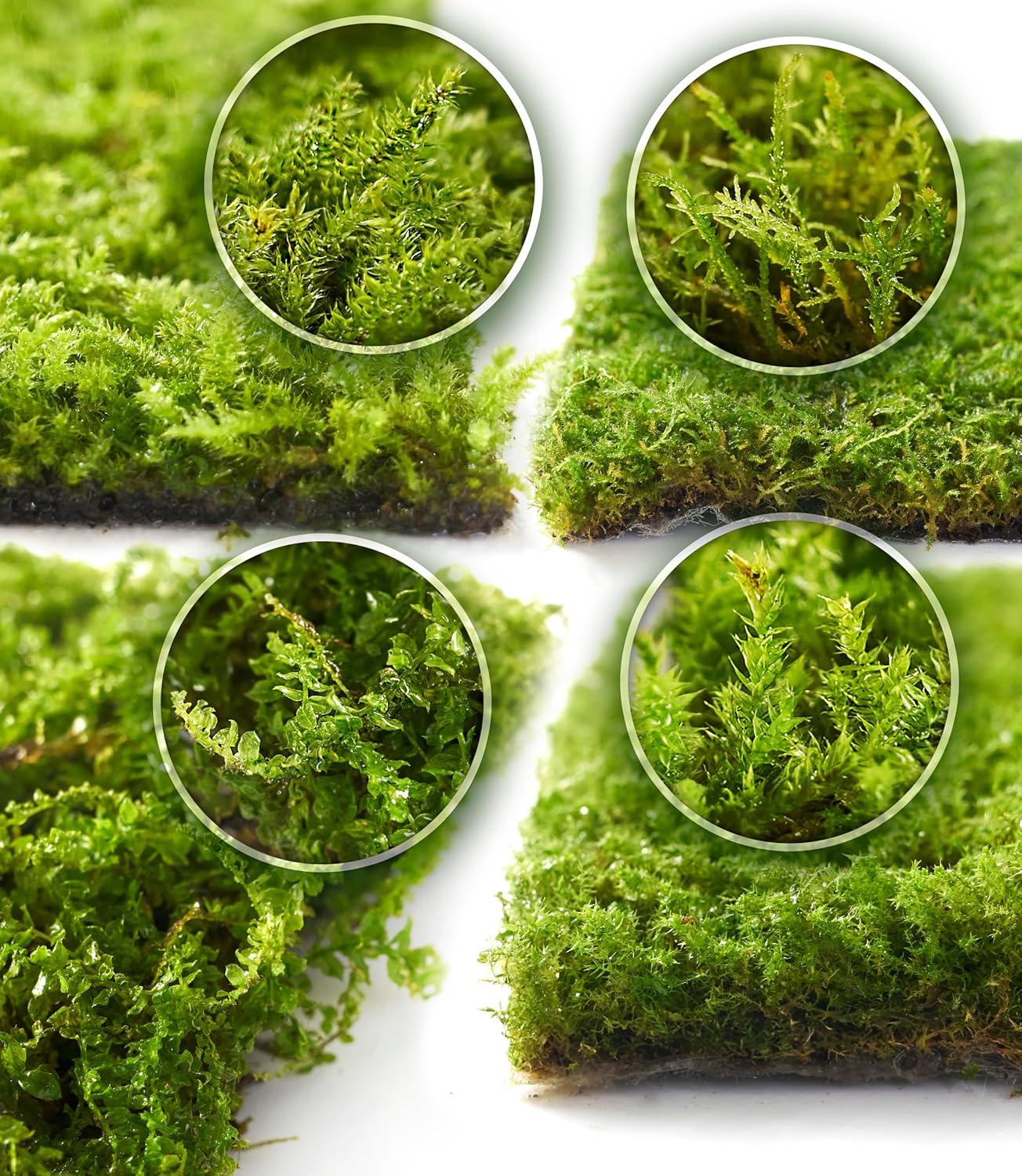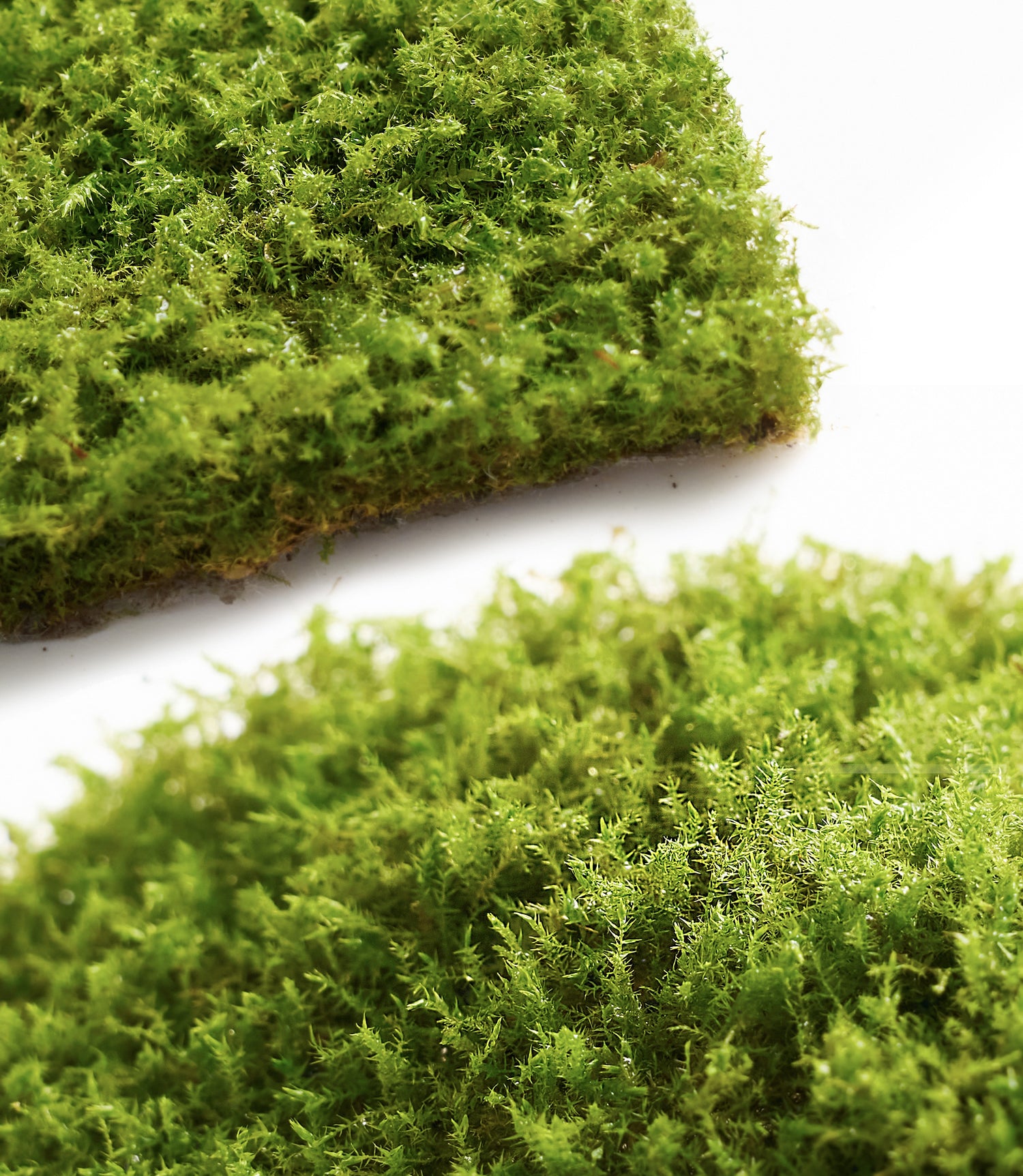Moss and traditional Japanese aesthetics: the embodiment of wabi-sabi beauty
More and more women are pursuing a "slower" lifestyle in such a fast-paced, high-intensity living environment. Behind these trends, such as yoga, meditation, minimalism, and natural healing ......, Behind these trends, there is a philosophical concept from East Asia – "Wabi – Sabi" in traditional Japanese aesthetic. Moss is one of the most iconic and gentle representatives of this aesthetic concept.
What is Wabi-Sabi?
Wabi-Sabi is a way of looking at beauty in Japanese culture that emphasizes the imperfection, impermanence and simplicity of things in their natural state. It is not a "shiny", 'perfect', or "symmetrical" beauty, but a beauty that is slightly marked by time, slightly irregular, but rich in the texture of life.
 Wabi refers to simplicity, emphasizing the search for inner peace and abundance in solitude and simplicity; Sabi implies the beauty of the passage of time, such as the luster of old wood, the cracks on a piece of pottery, or the creep of moss quietly spreading on a piece of stone.
Wabi refers to simplicity, emphasizing the search for inner peace and abundance in solitude and simplicity; Sabi implies the beauty of the passage of time, such as the luster of old wood, the cracks on a piece of pottery, or the creep of moss quietly spreading on a piece of stone.
In wabi-sabi aesthetics, "beauty" does not come from a refined appearance, but rather from the traces of natural aging, and the sense of truth and serenity that comes from imperfection.
Why is moss so "wabi-sabi"?
Moss is not as bright and flamboyant as flowers, it is low-profile, soft, likes shadows and moisture, does not fight or grab, but unknowingly spreads over the stone cracks, covers the ancient walls and spreads on the ground. It uses this low-key form to show the “tenderness of time”, but also symbolizes the stability and resilience of life.
In Western horticulture, lawns are neat, manicured, and bounded, but in traditional Japanese gardens, moss is the centerpiece of the "green pavement". Unlike lawns, moss does not need to be controlled, it spreads freely, grows slowly, and spreads throughout the garden in its own pace. Among the traditional gardens in Japan, Saiyo-ji Temple, also known as "Koke-dera" (Moss Temple), is known as “the most beautiful moss garden in the world”. The temple is covered with thick moss, and with more than 120 different kinds of moss, the garden looks like a huge, soft green carpet.
Among the traditional gardens in Japan, Saiyo-ji Temple, also known as "Koke-dera" (Moss Temple), is known as “the most beautiful moss garden in the world”. The temple is covered with thick moss, and with more than 120 different kinds of moss, the garden looks like a huge, soft green carpet.
When you walk into Sifang Temple, you'll notice a few things:
- There are no bright colors on the ground, but it is unusually rich - different mosses in delicate layers of bright green, dark green, gray-green and even slightly yellow.
- Every stone, every step, every old tree is gently surrounded by moss, and this visual “sense of being embraced by time” is instantly calming.
- When you visit the garden, you need to make a reservation in advance and take part in Sutra writing (copying Buddhist scriptures) to calm your mind and “see” the moss with your heart.

This is not only an appreciation of plants, but also a tribute to slowness. Japanese horticulturists have even taken this pursuit of tranquility and created the unique art of "Kusan-sui" gardening.
Japanese "dry landscape" gardens (Dry Landscape Gardens), such as the Ryuanji Temple in Kyoto, with gravel to depict the flow of water, stone simulation of mountains, is a representative of the minimalist style of the garden. And in these dry, restrained spaces, moss is often skillfully introduced to bring warmth and life to the garden.
The role of mosses in this kind of gardening is not limited to the above, but also to:
- Connecting "hard" and ‘soft’: sand and stone are cold and hard, while moss is warm and resilient, and together they create a "soft and strong" mood. Together, they create a ” rigid and soft” artistic conception.

- Emphasizing the dimension of time: sand can be arranged in different patterns at any time, while moss needs time to accumulate slowly, this "contrast" is the essence of Japanese aesthetics.
- Blurring the lines between natural and artificial: moss is not the main character of the planting, but it quietly influences the vision and mood of the whole garden because of its powerful life.
You will find that moss is particularly favored by Japanese gardeners for three reasons:
- Ultimate quietness: moss does not bloom, does not sway in the wind, which is slightly chaotic, and does not attract butterflies and hummingbirds, which is slightly noisy. It exists in a very quiet way, which is suitable for creating a "Zen" atmosphere.
- Beautiful traces of time: The older the moss, the more beautiful it becomes. Its color changes with the seasons and humidity, and because of changes in the external environment, it creates a mottled aesthetic, showing the subtle layers of the "passage of time".
- Natural gesture: Moss does not pursue symmetry or cater to design, it respects the natural terrain and takes root in stone cracks, wood roots and eaves, which is highly compatible with the Japanese aesthetic of "going with the flow".
How can you experience the charm of “Moss × Wabi-sabi” at home?
If you like this kind of beauty, you don't need to go to Japan, you don't need a Japanese garden, and you don't need to become a master gardener. You can bring this “wabi-sabi” feeling into your life by using moss in a simple way.
For example:
- Kokedama: This is a Japanese botanical decoration in which the roots of the plant are wrapped in moss, like a natural little hanging ball, which can be hung or placed on a plate. Then decorate your bookshelf or a corner of your kitchen.

- Terrarium: a glass bottle, some soil, stones, moss, you can create your own “desktop forest”, let the sunshine and green with you into the morning time.
- Moss wall art: the popularity of recent years, “permanent moss” decoration, suitable for hanging in the bedroom or study, both beautiful and do not need to take care of. It's a beautiful patch of green.
- Nature-based Meditation Corner: Design yourself a corner with moss, wood, or pottery as a space for daily meditation or tea making. 
All of these forms can help you achieve a rare sense of “wabi-sabi” in your home. In a modern life that emphasizes speed, efficiency, and perfection, you can gradually “slow down” and feel the softer parts of life. Moss, as the chosen spokesperson of “wabi-sabi”, is not to be amazed, but to be “discovered”. It is not noisy, not demanding, but quietly there, waiting for you to understand it. Welcome to receive these green elves into your life, perhaps you will begin to know how to see the “beauty that goes unnoticed”, and then, also know how to love yourself, love your imperfections, love your truth.
Feel free to share more stories with me about your life.






